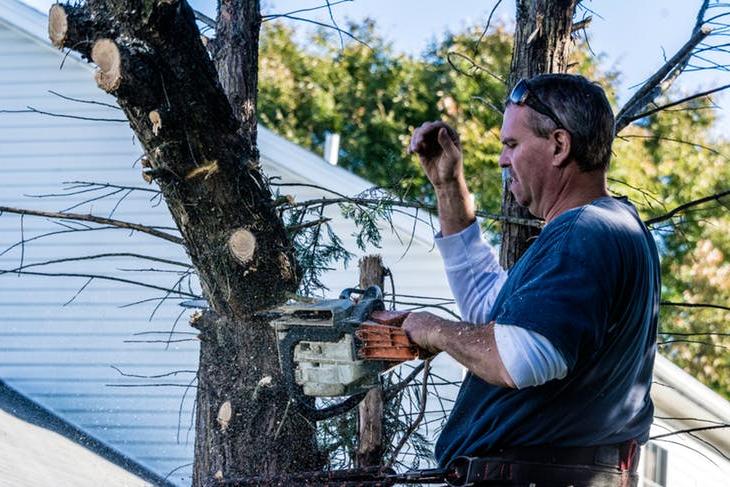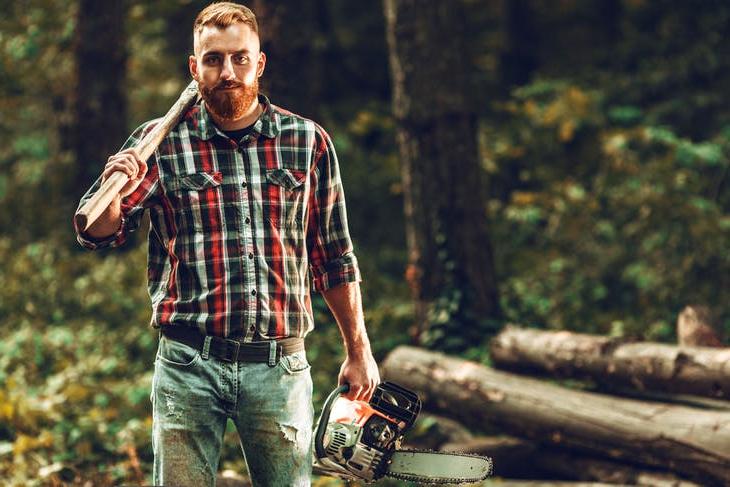Each work has its drawbacks. But choose one of these professions, and your life can be in serious danger.
Almost all people complain from time to time about their work and career. But if you are a forester, a farmer, or a truck driver, you can have big problems. This is one of the most dangerous types of work in the world, and they threaten to cause serious injury.
According to the latest data, in 2017, 5147 fatal injuries were recorded at work. This is a significant leap compared to four years earlier, when the number of deaths amounted to 4 405 people.
Most of the blame can be attributed to airplanes, trains and cars. Transport accidents account for 40% of occupational deaths. These were, of course, the most frequent fatal events.
Other causes of injury include falls, equipment malfunctions, and fires in the workplace.
Below are the professions that are currently considered the most life-threatening, depending on the level of fatal injuries in the workplace.
Power line installers and repairmen
Do you have cold milk in your refrigerator? Is your mobile phone fully charged and receiving calls and text messages? For this, you can thank the installer and repairman of the line. It is these people who help maintain the operation of the electrical network regardless of wind, rain, snow or snowfall.
Since natural disasters often cause power outages, these men and women must learn to work in the most adverse weather conditions.
Line workers often work for many hours fighting mother nature and high voltage electricity. The danger of electric shock, falls and other risks means that line installers and repairmen have one of the most dangerous professions in the world.
First-class lawn, farm and lawn care supervisors
When you think of a landscape designer, you are mentally referring directly to the one who mows the lawn.
In fact, site maintenance workers, including first-line supervisors, experienced many work-related deaths in 2017. Of these, several people died as a result of the fall of workers from the trees. Being on the ground was not much safer: you can be killed by a falling tree or branch.

Farmers and other agricultural workers
You can take a fresh look at the bread or vegetables you bought, knowing that the people who grow them put their lives at risk.
Most farmers and farm workers plow from dawn to dusk during the entire period. Work requires a lot of effort, especially if the weather is unfavorable.
They usually work with chemicals, machines and monitor the condition of equipment. Contact with objects and equipment is a particular hazard, including getting into working equipment or machinery.

Truck drivers
The average salary of truckers is 60 thousand rubles a month. Given how dangerous it is to be a driver, the payment seems disproportionately low. In 2017 and 2016, transport accidents accounted for the majority of fatal injuries at work among all jobs. Drivers of truck tractors received fatal injuries during transportation.
Surprisingly, road rage and heavy traffic are not the only obstacles.These drivers also deal with delivery times, hard work, and unconventional work schedules.

Metallurgical plant
You probably saw the iconic image of New York metallurgists sitting on a steel beam whose legs dangled hundreds of meters above the city streets. This is a vivid illustration of the serious risks of work. One wrong move can lead to a fatal fall.
In Russia, the metallurgical profession is one of the most sought after. The average metallurgy receives an average of 40-50 thousand, and a professional - up to 100 thousand rubles.

Garbage collectors
Garbage collection may be the least glamorous job on the list. But the problems are not only the stench and vague reputation that these workers must overcome.
Garbage collectors and recyclables are burdened by injuries. Constant weight lifting, flexion and extension of the limbs leads to pain and joint sprains. Exposure to chemical and biological substances and accidents with distracted motorists is a serious hazard.

Roofers
Roofers cannot let fear of heights interfere with their work. They, however, must be alert. In housing, more than a third of the deaths in this work are caused by falls from roofs.
However, the fall is not the only threat. Roofers also have one of the highest rates of non-fatal injuries and illnesses due to the materials they work with and the weather they endure. They constantly lift heavy loads, climb stairs, experience stress on their legs and can do most of their work on scaffolding and roofs.
It is not uncommon for roofers to get burned with hot bitumen, which they use to stick tiles to the roof. There is also a greater chance of sunburn or even fainting, especially when they work in the hot summer months.

Aviation pilots and flight engineers
Flying can be the safest way to travel, but however this does not preclude all danger.
Commercial pilots and their flight engineers, flight crew members responsible for engines and other systems during flight, often struggle with flight delays and irregular schedules. On top of that, their stress is that they have hundreds of lives in their hands almost every day.
Helicopter pilots involved in rescue operations can fly at low levels in bad weather or at night, land in areas surrounded by power lines, highways and other obstacles.

Loggers
It is not surprising that between the impact of adverse weather conditions, work in isolated areas and with powerful power tools, logging is one of the first places on the list.
Most deaths result from contact with a machine or object, such as a log.
For this reason, the industry pays great attention to appropriate safety measures and equipment. Thanks to protective helmets, hearing protection devices and enclosed mechanisms, the work of the logger really became more secure. However, this does not change the fact that this profession remains in the leading position among the most dangerous in the world.

Fishermen and related fishing workers
Do you think fishing is beautiful and romantic? In fact, everything is different. Fishermen and related workers have the most dangerous jobs in the world.
First, fishermen are threatened by their own equipment. Fishing hooks are able to accidentally pierce and tear the skin, while nets can easily get tangled and torn. Of course, these are far from their only problems.

There is a risk of injury from slippery decks, ice and large waves washing the deck. Collisions and shipwrecks are not ruled out. A storm can interrupt communication with the ground, flood the deck with water, or even completely submerge the ship.
Although deaths are rare, most of the accidents in this work are due to drowning.
